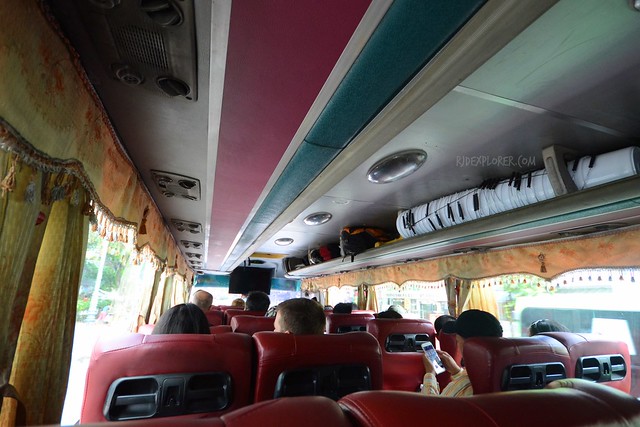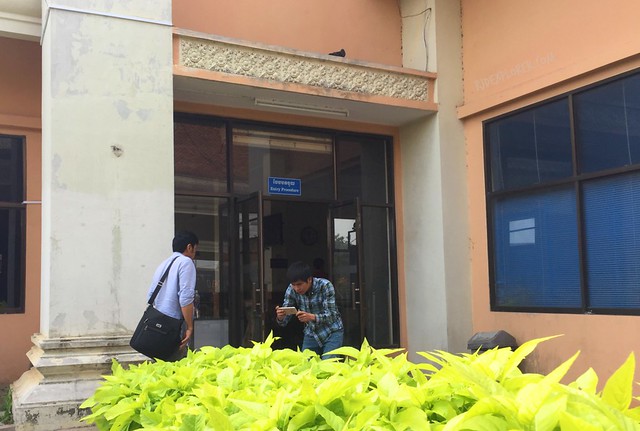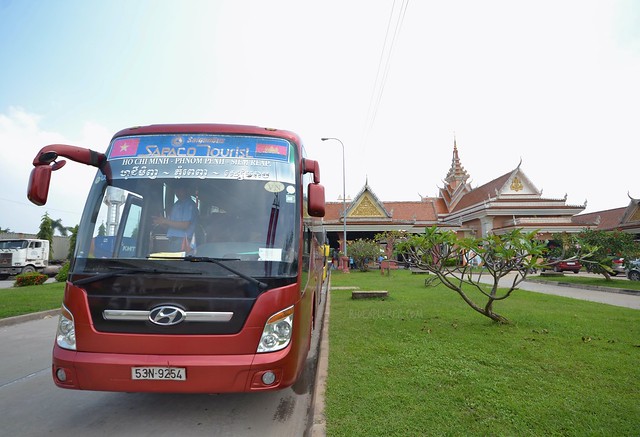Before anything else, if you’re planning to cross the border to Cambodia from Vietnam, book your ticket at least a week prior to your trip. A mistake on my part not to reserve a ticket in advance, Giant Ibis and Mekong Express were already fully-booked. The staff from The Common Room Project was able to find a seat for me but on Sapaco Tourist bus line.

The bus line has several schedules for Phnom Penh with 6 AM as the earliest. I availed the 8 AM schedule and went to their office at 325 Pham Ngu Lao, 30 minutes before the scheduled departure. At about 8 AM, everyone was called and informed to proceed to 23/9 Park where the buses wait.
RELATED POST: Indochina Backpacking Guide: 9 Days in Vietnam, Cambodia, and Thailand
The moment the bus left the station, the attendant approached everyone to collect our passport. If you already heard about this, that’s good but if not, don’t worry as the bus lines and the Vietnamese immigration are already used to this system on the border. The bus attendant will collect all passports and will give it to the immigration officer for the stamp. Included in the 11USD bus fare to Phnom Penh is a free bottle of mineral water.

After 2.5 hours on the road, we reached the exit point in Moc Bai. Everyone was required to go down the vehicle and enter a building, more of a warehouse. On the right, when you enter the complex, were people queuing and waiting for their passport to be stamped.
During my experience, there was no x-ray scanning made so we weren’t required to take our stuff out of the bus. Tip here is to find the bus attendant who took your passport when you left Ho Chi Minh City. Search for him on the lines as he will be the one to call out your name and give your passport back after the immigration officer put the exit stamp on it. We were accommodated on the leftmost lane. Exit the Vietnam side by letting an officer check your passport for one last time. Please ensure that the Cambodian arrival card, that the bus attendant filled up for you, is somewhere between your passport. This will save you time on the Cambodian side.

When all passengers are back on the bus, you will travel for about 3-5 minutes to the Cambodian entry point in Bavet. Again, everyone will go down and personally meet the Cambodian immigration officer for taking of picture and fingerprints (no taking of fingerprints happened in my experience).
For visa-free passports.
If you are from Indonesia, Laos, Malaysia, Vietnam, and Singapore, you’re not required to get a visa and can stay up to 30 days. In addition to these are Philippines (21 days) and Thailand (14 days).
For visa-on-arrival passports.
For nationals who need visa-on-arrival, let the bus attendant know that you need one so he could assist and instruct you with the visa processing. Visa-on-arrival in Cambodia is 30USD and the bus attendant usually asks for 5USD as his service fee.

The immigration officer didn’t ask for a fingerprint scan and immediately returned my passport after putting my entry stamp. He also stapled the departure card in one of the pages of my passport. When you pass the last officer for checking, you’re now ready to explore Cambodia.
After crossing the border, the bus crew usually have their lunch on a stopover somewhere depending on the bus line. You could also utilize this time to eat your lunch before another 3-4hrs travel to Phnom Penh, or 10 hours to Siem Reap.

Rice with sautéed vegetables is 1USD and most viands at 2USD. Please be aware that when you pay them in USD, your change might be in Cambodian Riel (KHR). I had a plateful of rice and a fish stewed and simmered in soy sauce for 3USD. When I gave them a 5USD bill, the guy gave me 12000KHR, so that’s 1USD for 6000KHR. KHR and USD are both accepted in Cambodia and the standard conversion of locals is 1USD = 4000KHR. You can also pay them with Vietnamese Dong if you still have some.
It was a nerve-racking first border crossing experience for me. Have you tried crossing the Vietnam-Cambodia border via Moc Bai-Bavet in the past? Kindly share us your experience by leaving a comment below.







